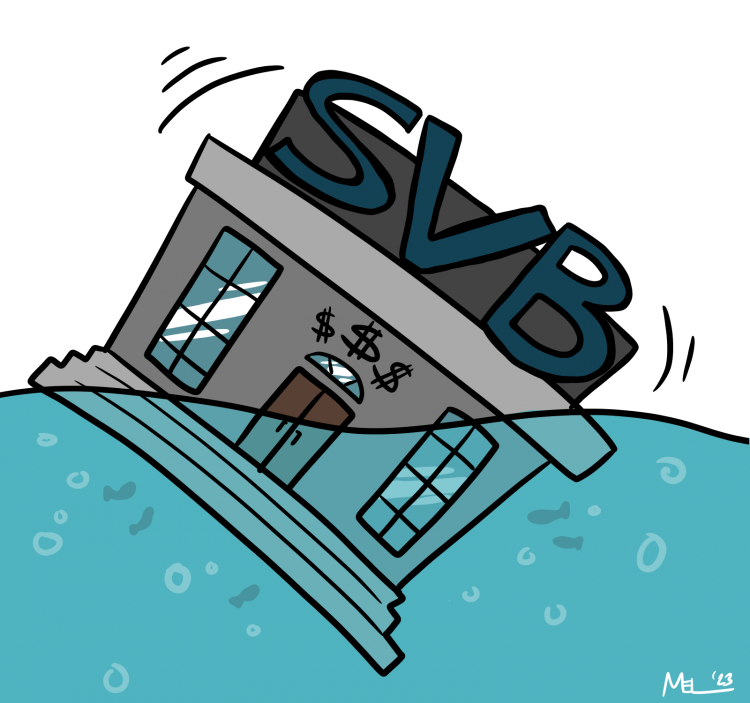Featured Image: Mel Lhuillier | Marlin Chronicle
In the beginning of March, the Silicon Valley Bank (SVB) became the largest bank to collapse since the financial crisis in 2008. SVB provided services to almost half the technology and life-science companies in the country.
Dr. Nadia Nafar, an associate professor of Management, Business and Economics and the assistant dean of the VWU Global Campus, discussed the causes and effects of the collapse.
“[SVB] did not wisely manage its financial risk. The bank invested in assets, but failed to purchase insurance in case the value of these assets declined,” Nafar said.
This led to heavy losses for SVB. “On Wednesday, March 8, 2023, SVB announced that it incurred $1.8 billion in losses in the first quarter of 2023,” Nafar said. After that, SVB’s stock fell by 60% and the bank received $42 billion in depositor withdrawal requests.
Sophomore Business major Rowan Stuart discussed the economic shock that SVB experienced when the Federal Reserve began raising interest rates to offset inflation. The Federal Reserve is the central bank of the U.S., and it serves to stabilize the economy and promote consumerism. In addition, the website for the Federal Reserve said the bank “seeks to minimize and contain systemic risks through active monitoring and engagement in the U.S. and abroad.”
Stuart said, “The [Federal Reserve] faces a difficult situation dealing with their own previous statements, inflation and public distrust as a result of this issue.”
However, the Federal Reserve is in place to protect the money of the people rather than use it as insurance for banks. “After another bank failure in New York from a run on the bank, they bailed both out with a fund banks pay into, not taxpayer dollars,” Stuart said.
A run on the bank occurs when a large group of depositors take out money at the same time, usually based on their fears of financial insecurity or bank collapse. As people withdraw, banks will run out of money.
Most banks, including SVB, keep a small portion of deposits and the rest goes towards long-term debt such as treasury bonds, which offer steady returns and low interest rates.
The treasury bonds were linked to the rise of inflation and the subsequent collapse of SVB. “Given the rise of inflation in the U.S., the Federal Reserve implemented interest rate hikes. This caused newly issued treasury bonds and government backed mortgage bonds to pay higher interest rates,” Nafar said.
Consequently, SVB’s “treasury and bond contracts were less attractive in the market,” Nafar said.
SVB then sold bonds for less than they were bought and lost the reported $1.8 billion.
“Deposits beyond $250,000 (or $500,000 for couples) are uninsured, meaning that there is no recourse for depositors to be reimbursed in case a bank fails,” Nafar said. “In SVB’s case, federal regulators promised that all depositors will get their money back. This means that SVB’s insured and uninsured deposits will get reimbursed.”
The $250,000 insurance comes from the Federal Deposit Insurance Corporation (FDIC), which is an independent agency of the U.S. specifically to protect bank depositors in the event that a bank or savings association fails.
Nafar said the reasoning behind the federal regulators reimbursing the money is to stop the risk of more bank runs and boost confidence in the banking systems.
The collapse of SVB led to collapses of smaller banks as well. “Following SVB’s collapse, small regional banks lost $108 billion of deposits in one week in favor of big banks,” Nafar said.
In short, “SVB could have avoided this unfortunate scenario by purchasing ‘insurance’ and hedging against interest rate risk,” Nafar said.
By Rhian Tramontana
rjtramontana@vwu.edu

